Beyond Liebfraumilch: Exploring the Diversity of German Wine at the "Germany Unplugged" 2012 tasting
We got drunk on that stuff as students because we didn't know any better and had no money. That is not what I would say, at least not in public, but it summarises how many British acquaintances refer to German wine - in particular the dreaded Liebfraumilch. German wine is associated with sweet, and sweet with bad. The British wine trade tend to love Riesling, dry or sweet, and some also appreciate German Pinot Noir. This is usually where the knowledge ends though. There are even "wine experts" who say Germany should not move away from the sweeter style of Riesling - whereas the reality is that the German wine industry has become so diverse it has long gone beyond that. German dry wines are now so varied as would confuse even the most sober foreign beholder.
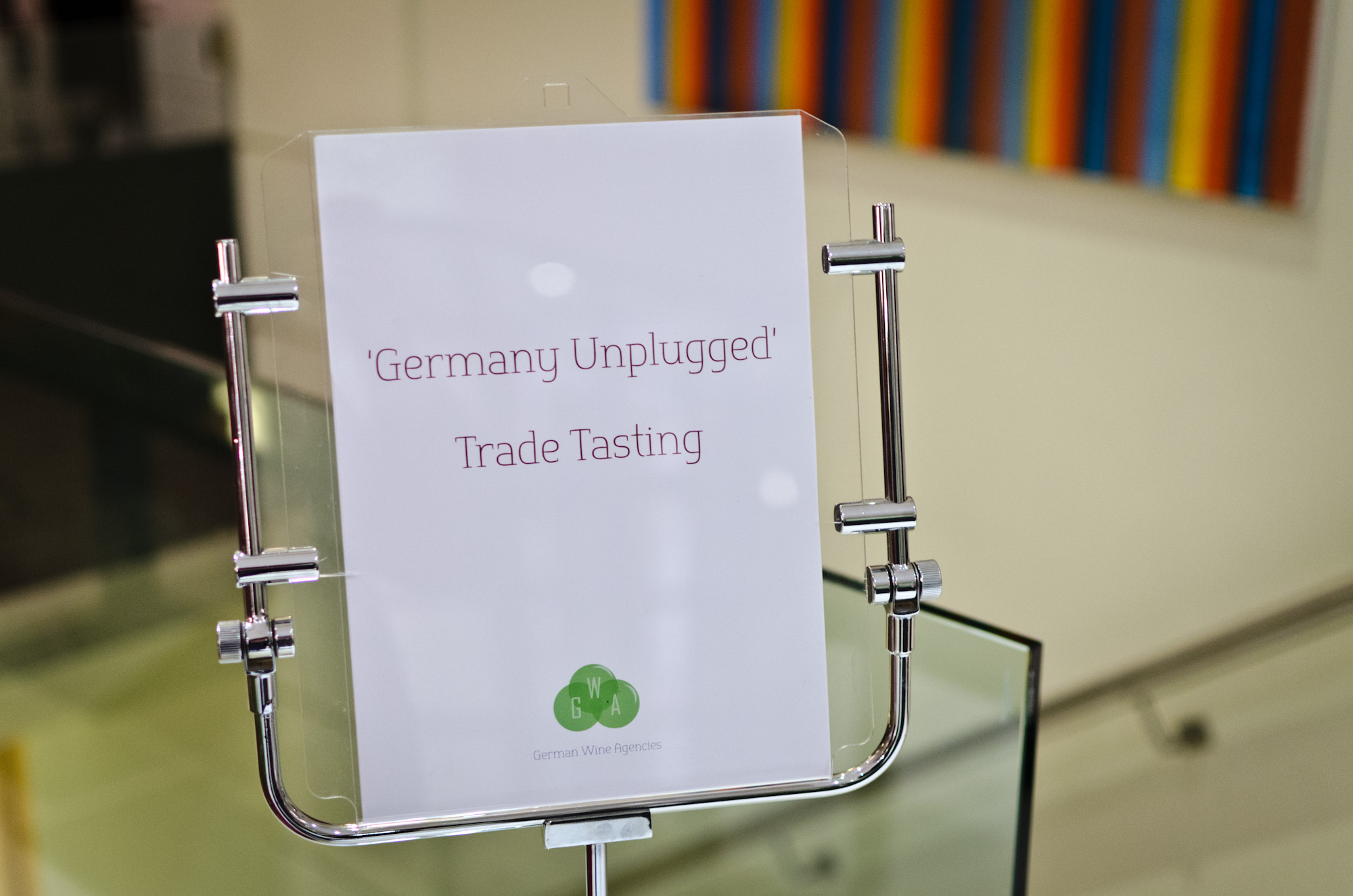
Last week the German Wine Agencies, a new distributor of German wines in the British market, invited members of the trade to be confused (and to leave everything else but sober, one would hope) by German wines.
German Wine Agencies focus on "a new generation of young innovative skilled wine makers" who represent the new dynamic in German wine, and at an interesting price point. As this matches nicely with our mission at the Wine Rambler I was more than happy to attend and help spread the word. Having tried some GWA wines before I was curious to sample my way across the whole portfolio. So last Wednesday I set out to Earls Court to "unplug" Germany.
In Earls Court, "unplugging Germany" means tasting wines from nine producers from the wine regions Mosel, Baden, Rheingau, Pfalz and also Rheinhessen (where I toured last autumn). Overall, I was impressed with the consistent quality of the wines and found the GWA portfolio to be really interesting and balanced - with two omissions, but we will come to that.
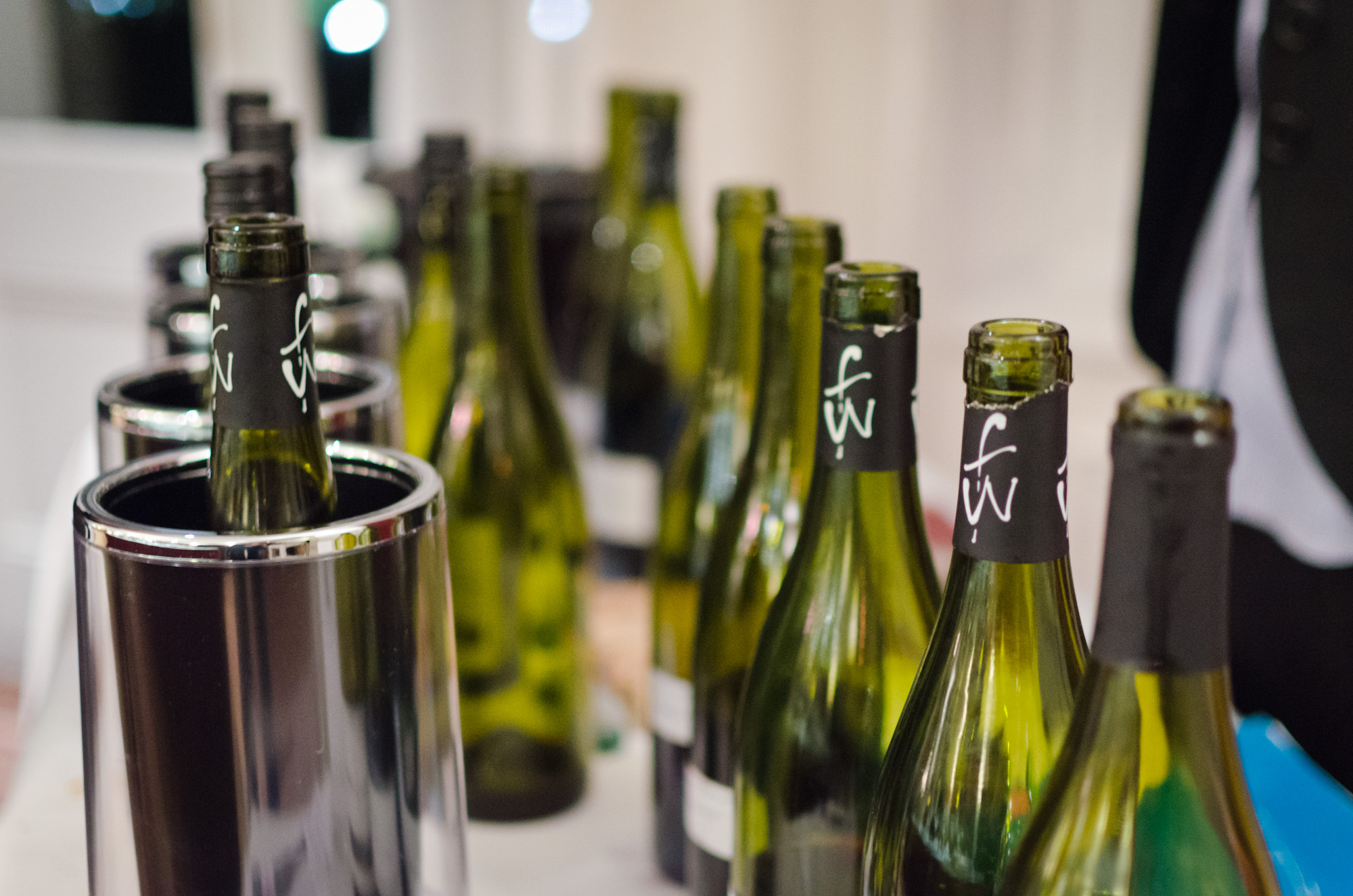
The Pfalz, one of my favourite Germany wine regions because of its variety, was represented by Weingut Langenwalter, an estate of about 25ha based in the village of Weisenheim. Apart from Riesling and Pinot Noir they featured Pinot Blanc, Pinot Gris, Sauvignon Blanc, Gewürztraminer and a cuvée made from Cabernet Sauvignon, St Laurent and Portugieser.
The Langenwalter wines were of consistently good quality, with the 2010 Hahnen Riesling (long finish; mineral, citrus and stone fruit) and the 2010 Altenberg Grauburgunder (Pinot Gris; intensity and good substance) standing out in particular. I also liked the fresh 2011 Pinot Blanc and 2010 Sauvignon Blanc. Apart from a fairly priced Pinot Noir, lovers of red wine should also check out the above mentioned cuvée "Terra S" 2009 that featured a nice vegetable-herb-berry mix with good tannin and substance.
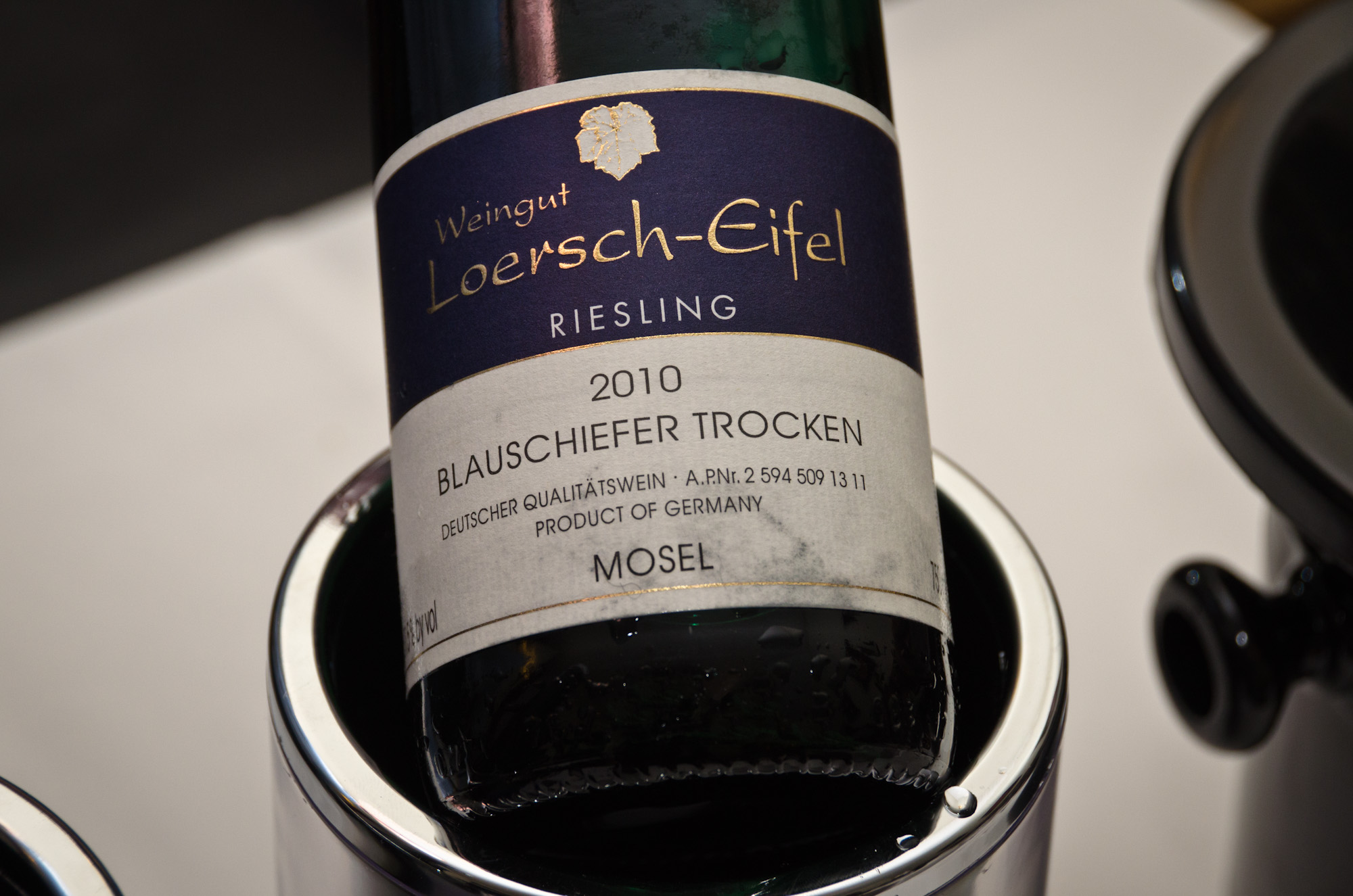
Having never tried one of their wines I found that Mosel producer Loersch-Eifel had a fantastic portfolio of six Rieslings going from "Mosel dry" to excitingly sweet TBA. The 2007 Beeren- and Trockenbeerenauslese were simply stunning in their exuberant concentration and balance, and a 2010 Spätlese (Trittenheimer Apotheke, Devon Terrassen) had the intensity that a good old vines Riesling can bring to the table (in this case the vines are 80-100 years old). Excellent stuff throughout, from a family with over 400 years of winemaking tradition and land in some of the Mosel's best vineyards.
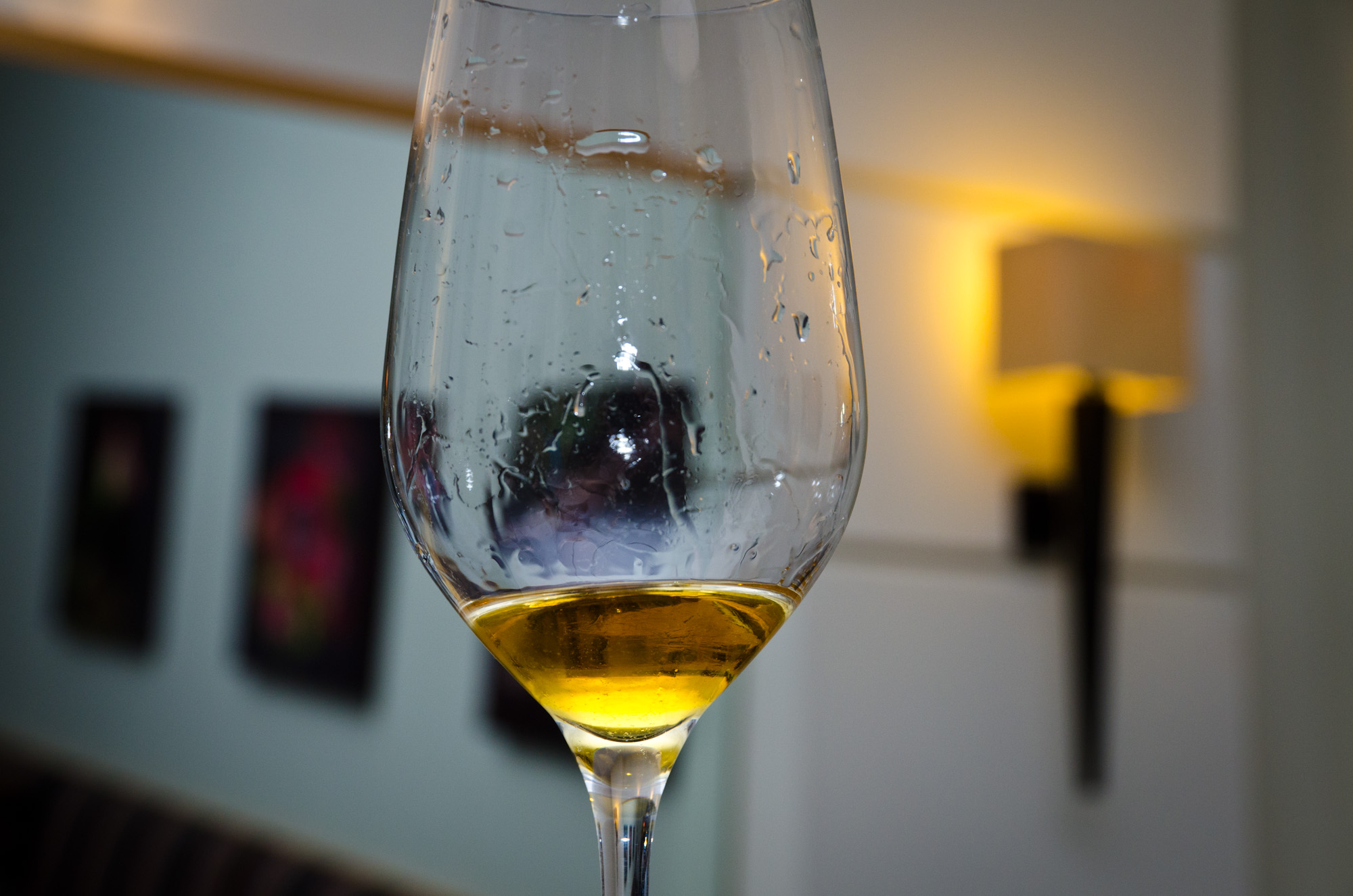
It was all Riesling again in the "other" historically famous German Riesling region, the Rheingau. Weingut Ankermühle, bought and renovated by Birgit Hüttner just a few years ago, featured Riesling with modern design and names that foreigners may even be able to pronounce and even remember: "Joseph", "Maria", "Hase" and "Gabriel". Wines with a girl name are sweet or off-dry whereas the boys are, of course?, dry. As you'd expect I found myself slightly more drawn to female charm, most notably the 2010 Riesling Maria, a very drinkable, lighter wine featuring sweet stone fruit, citrus fruit and a herbal mineral finish. As I was able to nick some wines after the tasting there will be more detailed Ankermühle reports on the Wine Rambler.
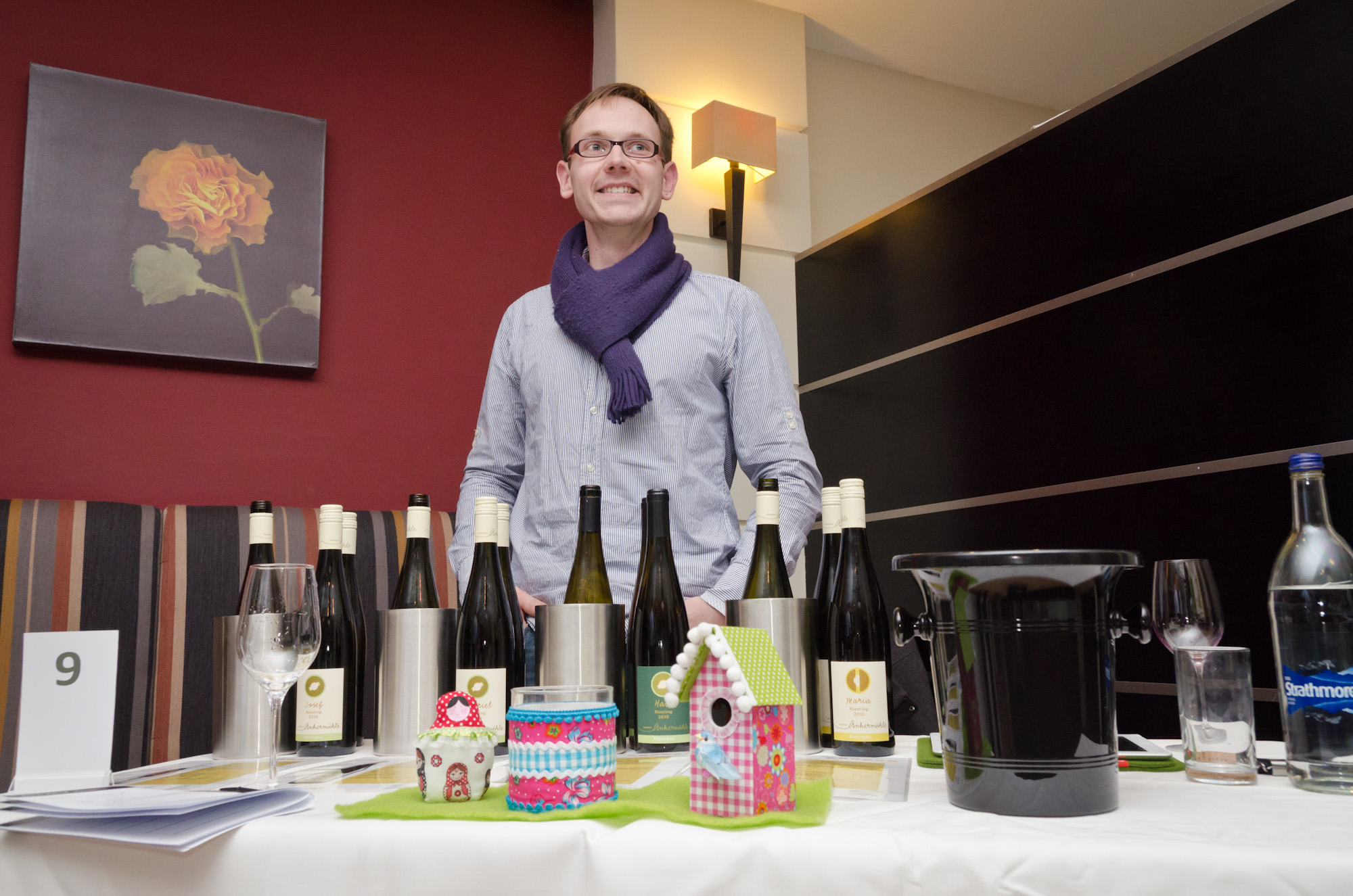
Next we travel to Baden, the warm, volcanic region in the German south west that has a reputation for excellent Pinot. So you won't be surprised to hear that at the Bimmerle and Waßmer table I had several great Pinots.
Siegbert Bimmerle is a third generation winemaker who takes great pride in his modern winery (Bimmerle source wine from several growers near Baden-Baden). I enjoyed both the Pinot Blanc and Gris - each good, typical expressions of the grape, with the Pinot Gris showing off a more concentrated (yet harmonious) fruit. While there was also good Riesling, especially the 2010 Klingenberg Riesling Spätlese, my highlight were the two Pinot Noirs: the 2009 Spätburgunder with its fine, fruity bouquet of cherry and a really likeable softness, but also the barrique aged 2009 that was a little more serious and substantial yet still lively because if its acidity.
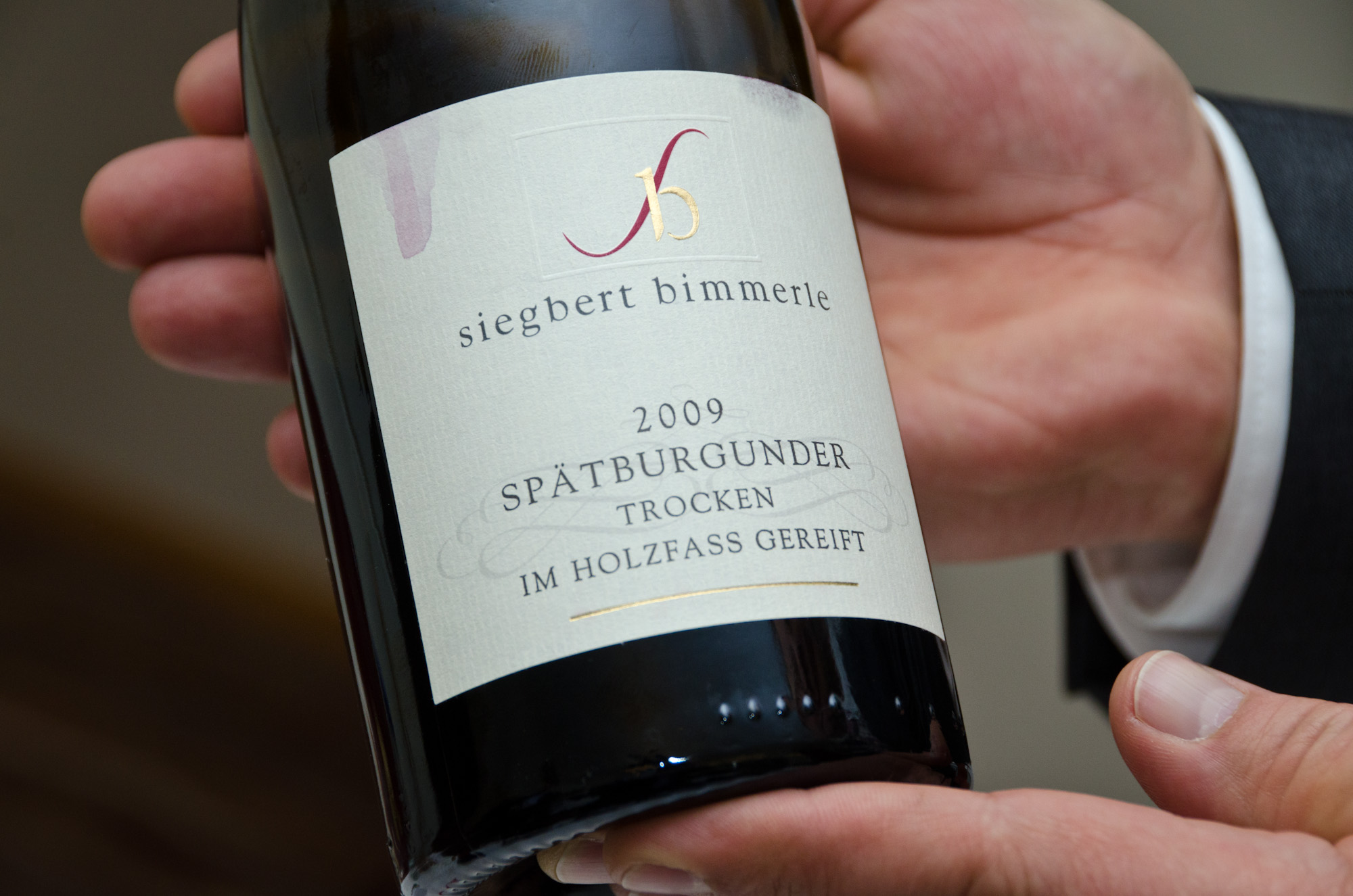
The second Baden producer, Fritz Waßmer, moved into winemaking about a decade ago after previously having grown asparagus and strawberries. This was clearly a good move as over the last years he has won several international awards, including a decanter trophy for his Pinot Noir. Eleven wines were on show, mostly reds but also some whites - including, surprisingly, a Viognier, probably my first from Baden. The Viognier surprised me with an almost playful and charming bouquet that soon revealed a wine with a more grown-up, complex character.
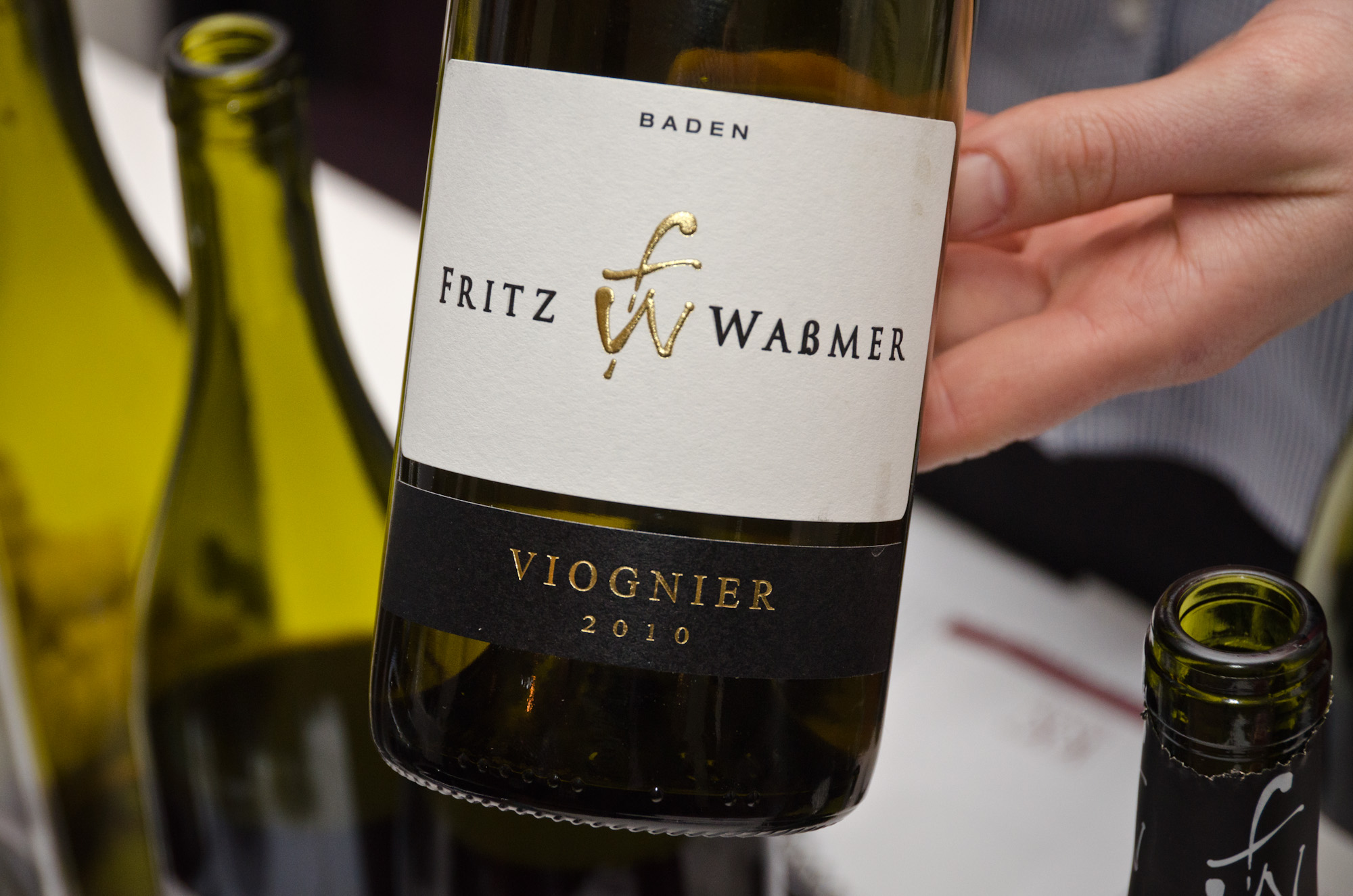
After enjoying the white Pinots I tasted several really good Pinot Noirs. It started with a lighter, more typical German style of cherries and herbal undergrowth and then progressed to more substantial, serious wines fresh from the barrel that will need a few years to show what they really can do. If you doubt German red wine and you have a chance to try some of these wines I trust you will change your mind. Also make sure to try the 2008 Syrah, a wine of substantial flavour and good structure, and the already very approachable barrel sample of the 2010 Cuvée Felix (Merlot and Cabernet Franc).
Last, but not least, we arrive in Rheinhessen. For GWA this currently means Thörle, Steinmühle, Peth-Wetz and Runkel.
Of these producers, Steinmühle had the smallest portfolio on show - three wines, a decent but somewhat unremarkable Pinot Blanc, an enjoyable Sylvaner (while I prefer them drier the touch of residual sugar should be popular with many) and a good value Pinot Noir with good berry fruit and a touch of chocolate that makes a pleasant drinking companion.

Similar to Steinmühle, the young Rheinhessen winemaker Matthias Runkel only showed a small sample of his 2011 wines at Germany Unplugged. It included a fresh Pinot Blanc - one of my favourites with lovely hay aromatics -, Riesling - he of the perfumed, floral bouquet -, and Gewürztraminer - harmonious and refreshing. As I also liked the 2009 Pinot Noir with lovely fruit and good structure and finish I can say I would have liked to taste more Runkel wines.
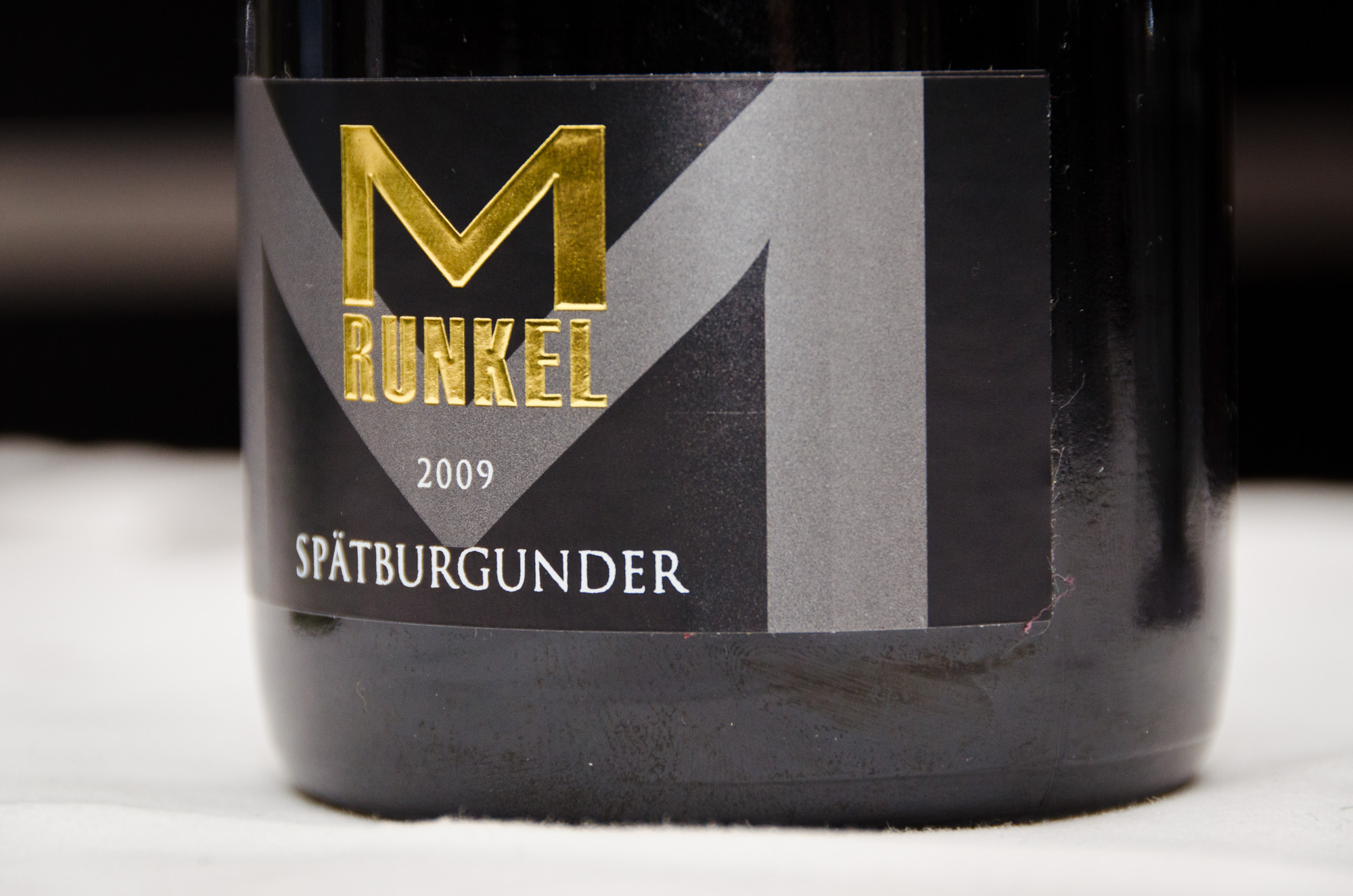
Luckily, there was more to taste at Peth-Wetz. Just a superficial look at the table run by Christian Peth showed that this Rheinhessen producer has a keen interest in the so called noble international varieties. Just imagine a line of ten bottles of wine from Germany made from Chardonnay, Cabernet Sauvignon, Merlot and Cabernet Franc (and my friends the Pinots Blanc and Noir). The international red varieties are not only blended (such as the juicy, unfiltered Assemblange (Cabernet Sauvignon, Dornfelder, Cabernet Mitos) or the more substantial Assemblange Reserve (Cabernet Sauvignon, Merlot, Cabernet Franc)), but also available as varietals - and, somewhat unusual for me, I found myself preferring the Cabernet Sauvignon over the Cabernet Franc. If you are now concerned about it all sounding too international I thing Peth-Wetz can lay those fears to rest with their highly drinkable dry Riesling.
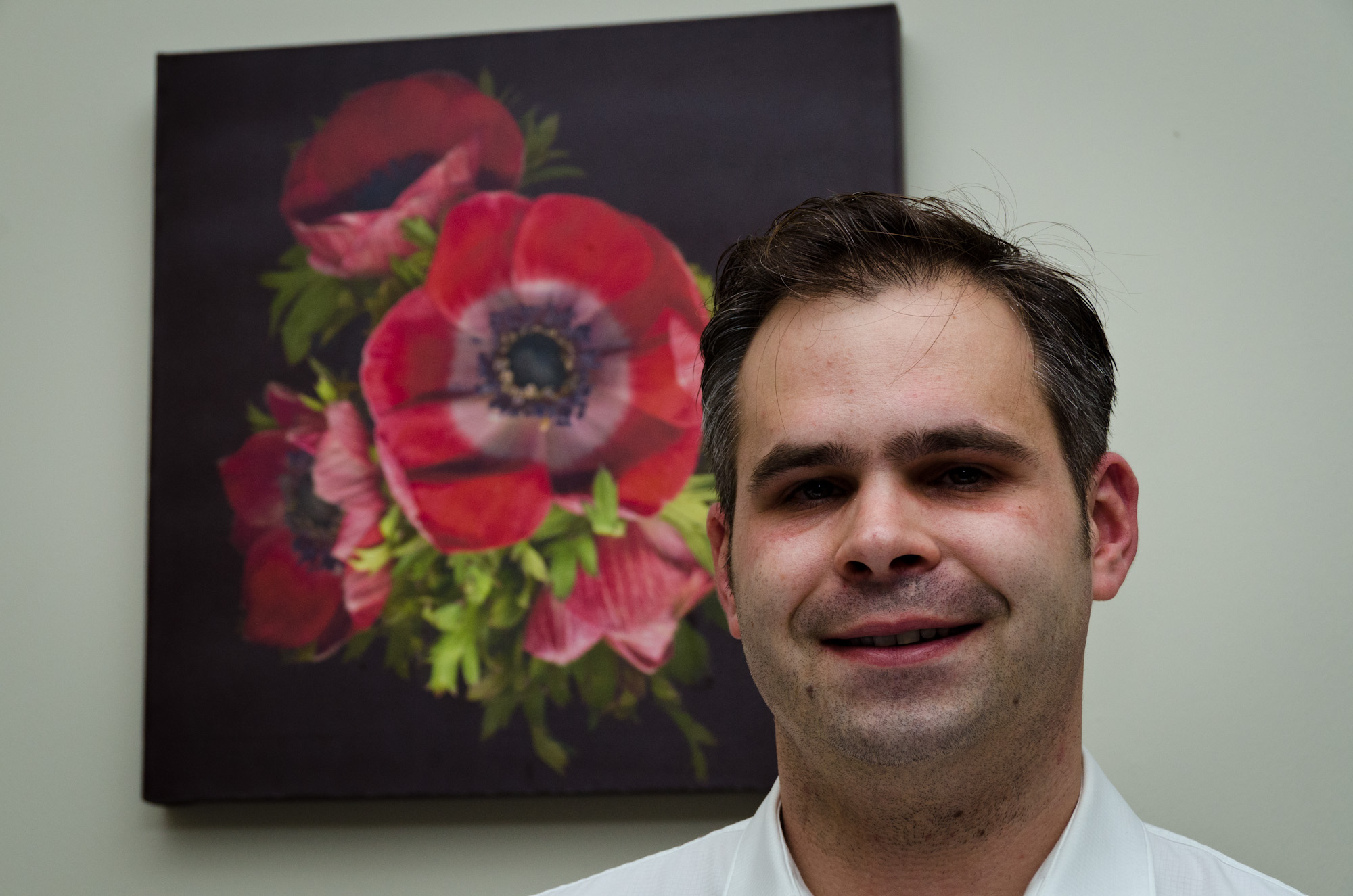
The first table in the layout now happens to be the last in my write-up: Thörle. If the few wines I have tasted are representative of the 2009 and 2010 vintage I have to say I'd like to see more of them. The 2009 Pinot Noir "Hölle" for instance, had energy and precision (the 2010 vintage maybe more elegant in comparison), and the two 2010 Rieslings were not only very drinkable but also had lovely herbal aromas and flavours, substance and good textures.
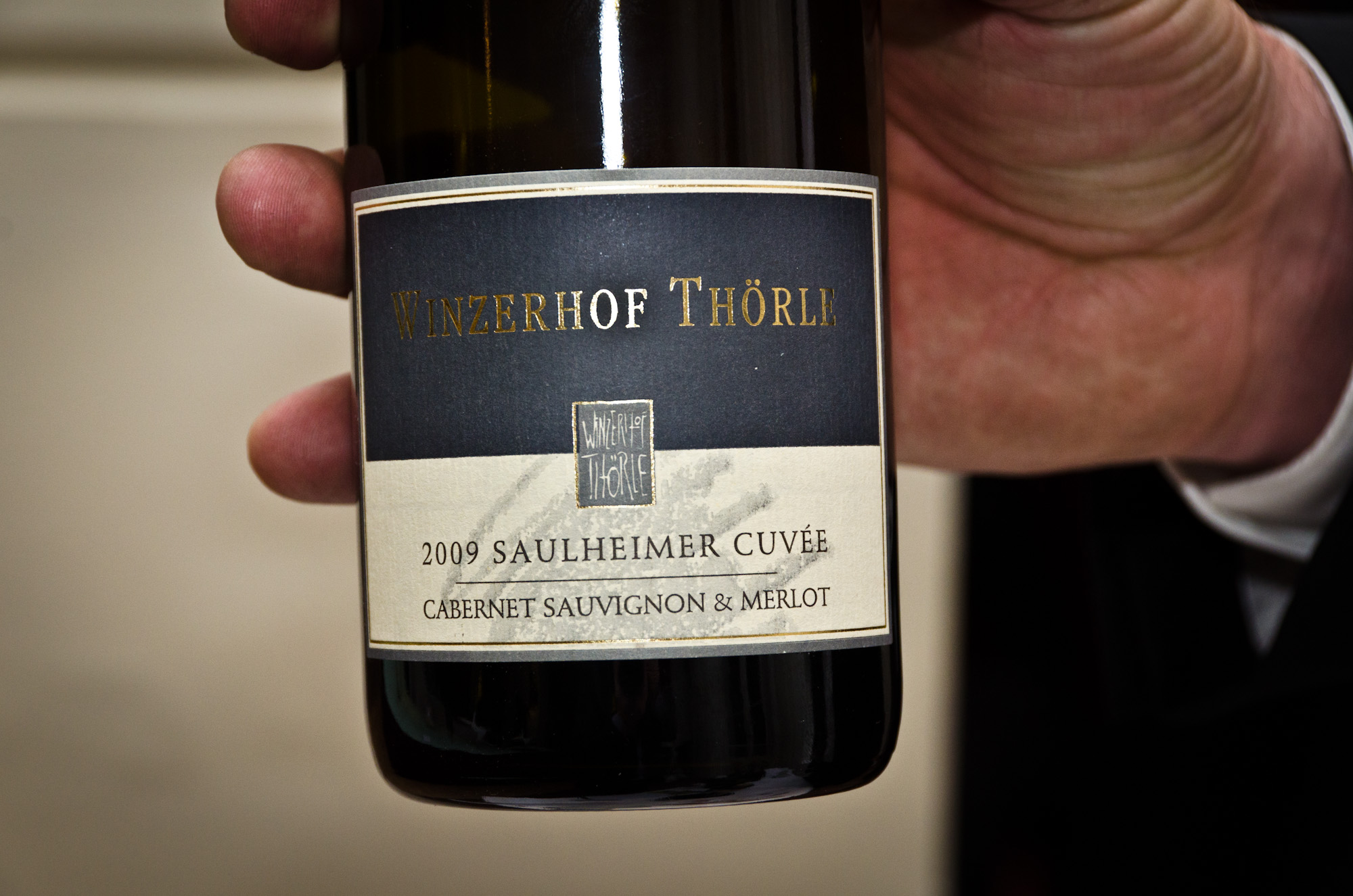
As the grape varieties on the label of the above photo indicate there is much more to German wine than (the delights of) Riesling. If I hadn't known that before the GWA tasting, "Germany Unplugged" would have driven the point home with some force. I am convinced GWA will help raising the profile of German wine in the British market, and I am curious to find out which new producers they will add to their portfolio this year.
To me there are two, perhaps three areas that deserve some attention to complete the portfolio. First of all I'd love to see some of the excellent German sparkling wines included - Rieslingsekt of course, the fresh, steely sparklers made from Riesling, but also the great wines made in the traditional style of Champagne. Secondly it would be nice to include one or two rosés; I don't drink them often but there is good German rosé that will find its friends. And lastly I would be thrilled if a few more Germanic grape varieties could be featured, such as Dornfelder, Scheurebe, Rieslaner, Tauberschwarz, Muskat-Trollinger or the "exotic" Gelber Orleans. Just to show that there is always more to explore.
